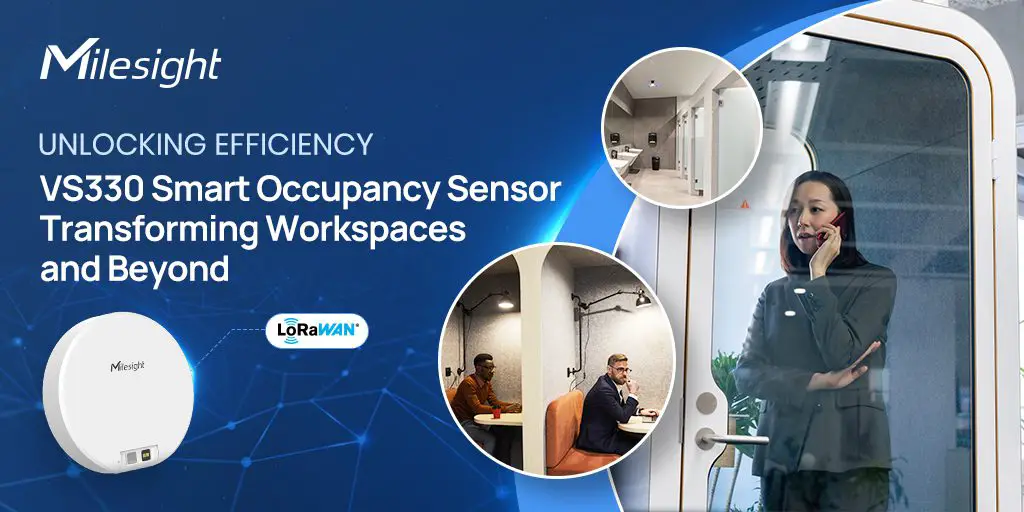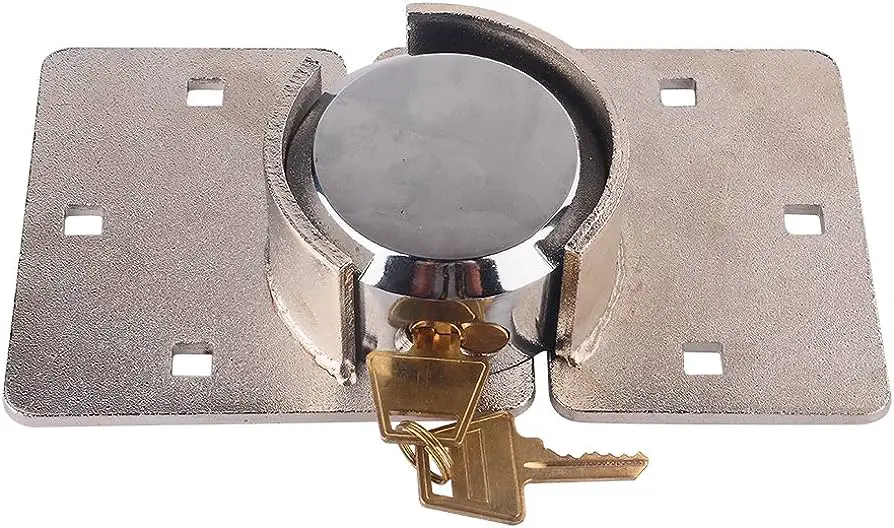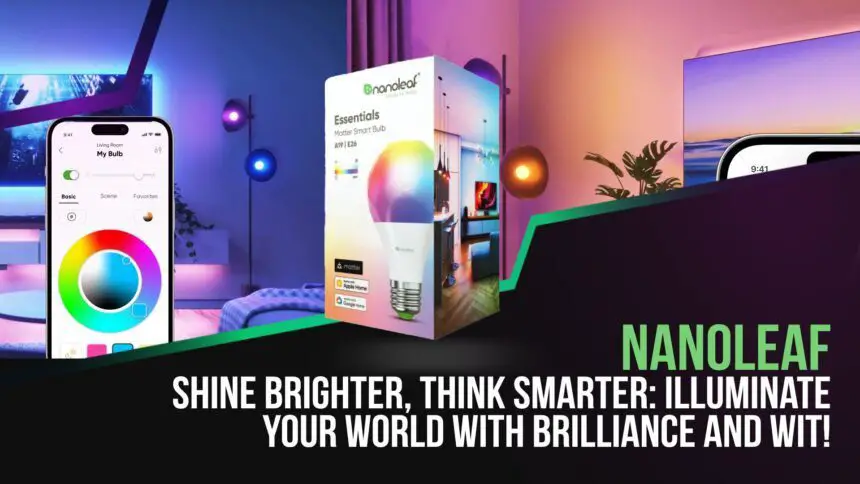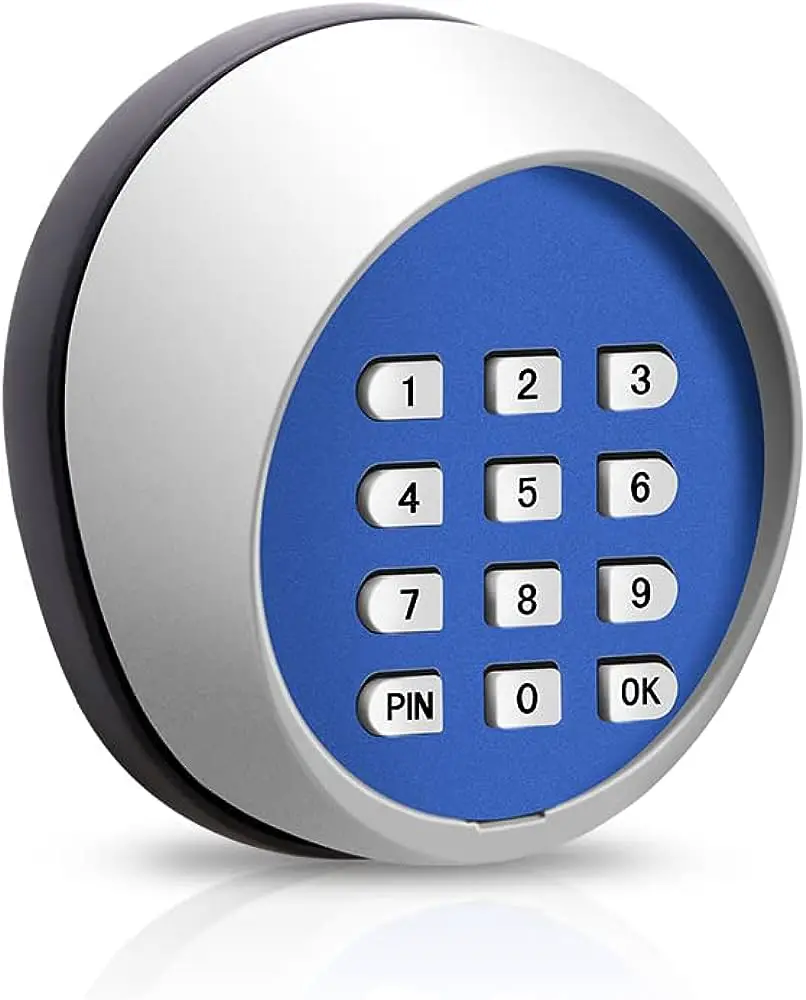Energy Efficiency of Smart Lighting: Unlocking the Power of Savings

Smart lighting offers high energy efficiency due to its advanced features and technology, resulting in reduced energy consumption and cost savings. With its intelligent control systems, automated scheduling, and motion sensors, smart lighting optimizes energy usage by adapting lighting levels according to occupancy and natural light availability.
This leads to a significant decrease in energy wastage, making smart lighting a sustainable and environmentally-friendly lighting solution. Smart lighting technology has revolutionized the way we illuminate our spaces by introducing advanced features that prioritize energy efficiency. As our society becomes increasingly aware of the importance of sustainability and energy conservation, smart lighting has emerged as a viable solution to reduce energy consumption and lower electricity costs.
By utilizing intelligent control systems, automated scheduling, and motion sensors, smart lighting adjusts lighting levels based on occupancy and natural light availability, ensuring that energy is not wasted unnecessarily. This not only benefits the environment by reducing our carbon footprint but also provides substantial cost savings for individuals and businesses. We will explore the energy efficiency of smart lighting and the various ways it contributes to a sustainable future.
The Benefits Of Smart Lighting
Smart lighting offers significant benefits in terms of energy efficiency. By using advanced technologies such as motion sensors and timers, it ensures that lights are only on when needed, ultimately reducing energy waste and lowering electricity bills.
Energy Savings: How Smart Lighting Can Reduce Energy Consumption
Smart lighting technology offers significant energy-saving benefits compared to traditional lighting systems. Here are some ways in which smart lighting can help reduce energy consumption:
- Occupancy-based Lighting Control: Smart lighting systems utilize sensors to detect human presence in a room or area. When no occupants are detected, the lights automatically turn off, eliminating wasted energy.
- Daylight Harvesting: Smart lighting systems are equipped with sensors that measure the amount of natural light available in a space. By adjusting the artificial lighting according to the level of natural light, energy consumption can be minimized by utilizing daylight effectively.
- Dimming and Individual Controls: Smart lighting allows for dimming of lights or controlling them individually. This flexibility enables users to minimize energy use by adjusting the light levels according to their requirements, avoiding the unnecessary use of full lighting power.
- Automated Scheduling: Smart lighting systems can be programmed to follow a schedule. This means lights can be set to turn on or off automatically at specific times, preventing lights from being left on when not needed and reducing energy waste.
- Remote Monitoring and Control: With smart lighting, users can monitor and control their lights remotely via smartphone apps or web interfaces. This feature allows users to ensure that lights are turned off when not in use, even when they are away from the premises, resulting in energy savings.
Cost Savings: The Financial Advantage Of Smart Lighting Systems
In addition to energy savings, smart lighting systems offer significant financial advantages. Here’s why investing in smart lighting can result in cost savings:
- Lower Energy Bills: By reducing energy consumption, smart lighting systems can result in lower electricity bills, saving businesses and homeowners a significant amount of money over time.
- Longer Lifespan: Smart lighting technology, such as LED bulbs, lasts significantly longer than traditional incandescent or fluorescent bulbs. This means less frequent bulb replacements, reducing maintenance and replacement costs.
- Reduced Maintenance costs: With automated scheduling and remote control capabilities, smart lighting systems require less manual intervention for maintenance, resulting in reduced labor costs.
- Enhanced Efficiency: Through efficient use of energy and lighting resources, smart lighting systems help optimize overall energy consumption, maximizing energy efficiency and reducing costs.
- Potential Incentives: In some cases, governments, utility companies, or local municipalities provide incentives or rebates for adopting energy-efficient technologies, including smart lighting systems. By taking advantage of these incentives, businesses and homeowners can further reduce upfront costs.
By embracing smart lighting technology, individuals, businesses, and communities can achieve substantial energy and cost savings. The combination of energy efficiency and financial advantages makes smart lighting a compelling choice for a sustainable and economically viable future.
The Role Of Sensors In Smart Lighting
Sensors play a crucial role in optimizing the energy efficiency of smart lighting systems. By detecting occupancy, ambient light levels, and user preferences, sensors can control the lighting output, resulting in significant energy savings without compromising user comfort or convenience.
Energy Efficiency Of Smart Lighting:
Smart lighting systems are revolutionizing the way we illuminate our spaces by optimizing energy consumption without sacrificing lighting quality. At the heart of these systems are various sensors that play a crucial role in enhancing energy efficiency. Let’s dive into the different types of sensors used in smart lighting and how they contribute to conserving energy.
Motion Sensors: Maximizing Energy Efficiency In Occupied Spaces
- Motion sensors detect movement within their range and act as triggers for smart lighting systems.
- They have the ability to turn lights on or off automatically based on occupancy, ensuring that lights are only illuminated when needed.
- Motion sensors not only eliminate the need for manual switching but also prevent lights from being left on in unoccupied areas, leading to significant energy savings.
Daylight Sensors: Harnessing Natural Light For Optimal Lighting Levels
- Daylight sensors, also known as photocells or light sensors, measure the amount of natural light available in a given space.
- These sensors are vital in maintaining optimal lighting levels by adjusting artificial lighting accordingly.
- When daylight levels are sufficient, smart lighting systems can automatically dim or turn off lights, reducing energy consumption and providing a more eco-friendly lighting solution.
Occupancy Sensors: Delivering Lighting When And Where It Is Needed
- Occupancy sensors are designed to detect the presence or absence of individuals within a specific area.
- By monitoring real-time occupancy, these sensors ensure that lights are activated only when people are present.
- Occupancy sensors are especially useful in spaces such as corridors, restrooms, and conference rooms, where lighting demand fluctuates throughout the day.
- By delivering lighting precisely where and when it is needed, occupancy sensors enhance energy efficiency by avoiding unnecessary lighting usage.
Sensors play a crucial role in the energy efficiency of smart lighting systems. Motion sensors, daylight sensors, and occupancy sensors work together to optimize lighting levels, reduce energy waste, and deliver a more sustainable lighting solution. By harnessing the power of these sensors, smart lighting is paving the way for a greener and more energy-efficient future.
The Importance Of Smart Controls
Achieve optimal energy efficiency with smart lighting controls that provide seamless control, automation, and customization options. Experience reduced energy consumption and lower utility costs by intelligently managing lighting levels and schedules.
Smart lighting technology not only offers enhanced convenience and ambience but also plays a crucial role in optimizing energy efficiency. By integrating smart controls into lighting systems, users have the power to regulate light levels and usage according to their needs.
Let’s explore two key components of smart controls: dimmers and timers, as well as remote control and automation.
Dimmers And Timers: Regulating Light Levels And Usage
- Dimmers: Dimmers allow users to adjust the brightness of their lights, providing flexibility and control over the ambiance of a space. By dimming the lights, unnecessary energy consumption can be reduced, leading to potential energy savings.
- Timers: Timers facilitate automated scheduling of lighting operations, ensuring that lights are only turned on when required. This functionality can be particularly useful for outdoor lighting, where lights can be programmed to turn on at dusk and switch off at dawn. Timers can also provide security benefits by creating the illusion of an occupied home when residents are away, deterring potential intruders.
Remote Control And Automation: Convenient And Energy-Efficient Lighting Management
- Remote control: With remote control capabilities, users can easily control their lights from anywhere within the range of the smart lighting system. This feature offers convenience and flexibility, allowing users to turn lights on or off without physically accessing switches or fixtures.
- Automation: Smart lighting systems can be integrated with other smart devices and systems, enabling automation based on various triggers and predefined schedules. For example, lights can be set to turn off automatically when no motion is detected in a room for a certain period of time. This seamless integration and automation promote energy efficiency by eliminating the risk of lights being left on when not needed.
By incorporating dimmers, timers, remote control, and automation features, smart lighting systems empower users to optimize energy usage and enhance lighting experiences. As a result, energy efficiency is greatly improved, leading to reduced energy consumption and lower electricity bills. Harnessing the power of smart controls is not only environmentally friendly but also economically beneficial in the long run.

Credit: lumoscontrols.com
Integrating Smart Lighting With Iot
Integrating Smart Lighting with IoT allows for enhanced energy efficiency, reducing power consumption and cutting costs. With advanced technology, smart lighting systems intelligently adapt to occupancy, daylight levels, and user preferences, improving overall energy conservation.
Smart lighting technology has revolutionized the way we illuminate our spaces while promoting energy efficiency. One of the key aspects that sets smart lighting apart is its integration with the Internet of Things (IoT). By seamlessly connecting to the IoT network, smart lighting systems open up a world of possibilities for controlling, monitoring, and optimizing energy consumption.
In this section, we will explore the integration of smart lighting with IoT, focusing on two important aspects: wireless communication and data analysis and insights.
Wireless Communication: Enabling Seamless Integration And Control
- Wireless communication lies at the heart of integrating smart lighting with the IoT network. It allows for seamless connectivity between lighting fixtures and other IoT devices, enabling efficient control and management of lighting systems.
- Smart lighting systems use various wireless communication protocols, such as Zigbee, Bluetooth, and Wi-Fi, to establish connections and exchange data with other devices in the IoT ecosystem.
- With wireless communication, users can remotely control and adjust lighting settings, including brightness, color temperature, and scheduling, through mobile apps or voice commands.
- Wireless connectivity also facilitates the creation of intelligent lighting networks, where fixtures communicate with each other to optimize energy usage in real-time based on occupancy, daylight availability, and user preferences.
- By integrating smart lighting with wireless communication, businesses and homeowners can enjoy enhanced convenience, energy savings, and improved overall lighting experiences.
Data Analysis And Insights: Leveraging Smart Lighting For Better Energy Management
- Smart lighting systems generate a wealth of data that can be analyzed to gain valuable insights and optimize energy management.
- By collecting and analyzing data on energy consumption, occupancy patterns, and ambient light levels, smart lighting systems can provide valuable information to help identify areas for improvement and optimize energy usage.
- Data analytics can be used to identify trends and anomalies in energy consumption, allowing for predictive maintenance and proactive energy management.
- Integration with IoT platforms and cloud-based solutions enables advanced analytics capabilities, making it easier to visualize and interpret lighting data in a meaningful way.
- With the insights gained from data analysis, businesses can optimize their lighting systems for energy efficiency, reducing consumption during non-peak hours, and adjusting lighting levels based on actual usage patterns.
- Leveraging data analysis and insights, smart lighting systems offer businesses and individuals the opportunity to make informed decisions regarding energy consumption and contribute to a greener and more sustainable future.
Smart lighting integrated with IoT technology brings numerous benefits, including efficient control through wireless communication and the ability to leverage data analysis for better energy management. This integration not only enhances lighting experiences but also contributes to a more sustainable and eco-friendly approach to lighting our spaces.
Smart Lighting Strategies For Energy Efficiency
Discover effective strategies to enhance energy efficiency with smart lighting technology. Optimize energy usage and minimize costs by implementing intelligent lighting solutions that adapt to environmental conditions and user preferences. Increase sustainability while creating a well-lit and comfortable environment.
Zoning And Grouping: Tailoring Lighting To Specific Areas And Activities
One effective strategy for maximizing energy efficiency with smart lighting is zoning and grouping. By dividing the space into different zones and grouping lights accordingly, you can tailor the lighting to specific areas and activities. Here are some key points to consider:
- Zoning: Divide the space into different zones based on usage patterns, such as workstations, meeting rooms, common areas, and hallways.
- Grouping: Group lights within each zone to control them collectively and provide the right amount of illumination as required by the activities in that area.
Energy Monitoring And Reporting: Tracking Energy Usage For Continuous Improvement
Another crucial aspect of smart lighting for energy efficiency is energy monitoring and reporting. By tracking energy usage, you can identify areas of improvement and make data-driven decisions to optimize lighting efficiency. Here are a few points to keep in mind:
- Real-time Monitoring: Utilize smart sensors and energy monitoring systems to track energy consumption in real-time.
- Data Analysis: Analyze energy usage data and identify patterns, trends, and anomalies to understand where energy is being wasted or can be optimized.
- Reporting: Generate regular reports to keep stakeholders informed about energy consumption, savings, and CO2 reduction achieved through lighting efficiency measures.
Adaptive Lighting: Adjusting Lighting Levels Based on Occupancy and Task Requirements
Adaptive lighting is another powerful smart lighting strategy that helps save energy by adjusting lighting levels based on occupancy and task requirements. Here are some essential considerations:
- Occupancy Sensing: Incorporate occupancy sensors that detect movement to automatically turn lights on or off when areas are unoccupied.
- Task-based Illumination: Implement smart lighting systems that can provide brighter illumination when required for tasks and dim lighting in areas with no activity.
- Integration with Natural Light: Integrate smart lighting with natural light sensors to optimize illumination levels based on natural lighting conditions, reducing unnecessary energy consumption.
By implementing zoning and grouping techniques, leveraging energy monitoring and reporting, and utilizing adaptive lighting features, you can significantly enhance energy efficiency with smart lighting systems. These strategies empower you to tailor lighting to specific areas and activities, track and analyze energy usage, and adjust lighting levels as per occupancy and task requirements.
Overcoming Challenges And Barriers In Implementing Smart Lighting
Overcoming challenges and barriers in the implementation of smart lighting is crucial for achieving energy efficiency. Efficient use of smart lighting technology can help reduce energy consumption and promote sustainability. By addressing these obstacles, we can unlock the full potential of smart lighting systems, contributing to a greener and more sustainable future.
Smart lighting systems are revolutionizing the way we illuminate our spaces, providing numerous benefits such as energy efficiency, cost savings, and enhanced control. However, like any technology, implementing smart lighting comes with its own set of challenges and barriers. In this section, we will explore some of the key obstacles and discuss strategies to overcome them successfully.
Let’s delve into the details, shall we?
Cost Considerations: Weighing The Initial Investment Against Long-Term Savings
- Initial Investment: Smart lighting systems often require a higher upfront cost compared to traditional lighting solutions. This cost includes the purchase of smart bulbs, sensors, and controllers, as well as the installation expenses.
- Long-Term Savings: Despite the initial investment, smart lighting offers significant long-term savings in terms of energy consumption and maintenance costs. LED smart bulbs, for instance, are highly energy-efficient, consuming considerably less electricity compared to traditional incandescent bulbs. Additionally, the longer lifespan of LED bulbs reduces the need for frequent replacements, leading to reduced maintenance expenses.
Compatibility Issues: Selecting The Right Smart Lighting System For Integration
- System Compatibility: One of the critical challenges in implementing smart lighting is ensuring compatibility between the smart lighting system and existing infrastructures. Before investing in a smart lighting solution, it is vital to thoroughly examine compatibility requirements and conduct thorough compatibility tests.
- Integration with other Devices: Another aspect to consider is the integration of smart lighting systems with other smart devices and platforms. Compatibility with voice assistants, home automation systems, and mobile applications can enhance the functionality and user experience of the overall smart home ecosystem.
User Acceptance And Behavior: Encouraging Adoption And Proper Utilization
- Education and Awareness: Lack of awareness and understanding regarding the benefits of smart lighting can hinder widespread adoption. Educating users about the features, advantages, and energy-saving potential of smart lighting systems can help overcome resistance and increase acceptance.
- User-Friendly Interfaces: To ensure proper utilization of smart lighting systems, user interfaces should be intuitive, user-friendly, and easily accessible. Designing mobile apps and control panels with a simple and visually appealing interface can encourage users to explore and customize their lighting preferences actively.
- Behavior Change: Changing user behavior is crucial for optimizing energy efficiency with smart lighting. Encouraging users to turn off lights when not needed, utilizing automatic scheduling features, and incorporating motion sensors to detect occupancy can significantly contribute to energy savings.
Implementing smart lighting may come with its fair share of challenges, but with the right approach and strategies, these barriers can be overcome effectively. By carefully considering cost implications, selecting compatible systems, and actively promoting user acceptance and behavior change, the path to energy-efficient smart lighting becomes clearer.
So, let’s embrace the power of smart lighting and illuminate a brighter, greener future.
Case Studies: Real-World Examples Of Successful Smart Lighting Implementations
Discover real-world examples of successful smart lighting implementations through case studies, showcasing the remarkable energy efficiency achieved. Witness how smart lighting technology has revolutionized energy consumption and made a positive impact on sustainability.
Smart Lighting in Commercial Buildings: A Case Study of Energy Savings
With the increasing focus on sustainability and energy efficiency, smart lighting has emerged as a powerful solution for reducing energy consumption in commercial buildings. By integrating advanced sensors, controls, and connectivity, smart lighting systems can adapt to the needs of the space and occupants in real-time.
Let’s explore some real-world examples of successful smart lighting implementations in commercial settings:
- Smart occupancy sensors and daylight harvesting: Utilizing motion sensors and ambient light sensors, smart lighting systems can automatically adjust lighting levels based on occupancy and natural light availability. This intelligent control strategy ensures that lights are only on when needed, resulting in significant energy savings.
- Zoning and scheduling: Smart lighting systems allow for precise zoning and scheduling, enabling targeted illumination in specific areas and at specific times. By tailoring lighting to specific usage patterns, energy waste is minimized, and optimal lighting conditions are maintained.
- Integration with building management systems: Smart lighting systems can seamlessly integrate with building management systems, allowing for centralized monitoring and control. This integration enables facility managers to identify inefficiencies, track energy usage, and make data-driven decisions to further optimize energy consumption.
Smart Lighting In Residential Settings: Achieving Comfort And Efficiency
In addition to commercial buildings, smart lighting also offers numerous benefits in residential settings. By implementing intelligent lighting solutions, homeowners can create a comfortable and energy-efficient living environment. Here are some key aspects to consider:
- Personalized lighting control: Smart lighting systems provide the flexibility to personalize lighting according to individual preferences and requirements. With features like adjustable color temperature and brightness levels, residents can customize their lighting experience for different tasks and moods, while also reducing energy consumption.
- Energy monitoring and management: Smart lighting systems equipped with energy monitoring capabilities allow homeowners to track their energy usage in real-time. This visibility empowers them to identify energy-intensive areas and make informed choices to minimize wastage, leading to lower electricity bills and environmental sustainability.
- Integration with smart home ecosystems: Leveraging the power of connectivity, smart lighting systems can seamlessly integrate with other smart home devices such as thermostats, voice assistants, and security systems. This integration enables coordinated actions, such as automatically adjusting lighting based on occupancy or synchronizing lighting with other smart devices for enhanced convenience and energy efficiency.
By implementing smart lighting solutions in both commercial and residential settings, significant energy savings can be achieved without compromising on comfort and functionality. These real-world case studies demonstrate the effectiveness of smart lighting in reducing energy consumption and delivering a more sustainable future.
The Future Of Smart Lighting
The future of smart lighting lies in its energy efficiency, allowing for reduced electricity consumption without compromising on brightness or functionality. With advanced technologies and intuitive controls, smart lighting systems have the potential to revolutionize the way we light our homes and offices while minimizing our environmental impact.
Advancements In Technology: Driving Innovation In Energy Efficiency
Smart lighting technology has come a long way in recent years, with advancements in technology driving innovation in energy efficiency. These developments have not only made our lives more convenient but also contribute to a greener and more sustainable future.
Let’s explore some key advancements that are shaping the future of smart lighting:
- Energy-efficient LED Lighting: LED (Light Emitting Diode) technology has revolutionized the lighting industry. LED bulbs use significantly less energy compared to traditional incandescent bulbs, making them highly energy-efficient. They also last much longer, reducing the need for frequent replacements.
- Motion Sensors: Smart lighting systems now incorporate motion sensors that detect movement within a room or area. As soon as the sensors detect no movement, the lights automatically turn off, saving energy when lighting is not required.
- Daylight Harvesting: Smart lighting systems can adjust the brightness and intensity of lights based on the amount of natural daylight available. This intelligent feature ensures that lights are not unnecessarily bright, thereby conserving energy.
- Wireless Connectivity: Smart lighting can now be controlled wirelessly through mobile apps or voice commands. This allows users to turn lights on or off remotely, adjust brightness levels, or even set up schedules for automated lighting control. By eliminating the need for physical switches, wireless connectivity adds convenience and energy efficiency.
- Adaptive Lighting: With adaptive lighting technology, smart lighting systems can automatically adjust the color temperature and intensity of lights based on the time of day. This not only creates the perfect ambiance but also enhances energy efficiency by optimizing lighting for different tasks and environments.
Smart Cities And Sustainable Development: Smart Lighting As A Core Component
With the rise of smart cities and sustainable development initiatives, smart lighting has emerged as a core component in driving energy efficiency and environmental conservation. Here are some key points to consider:
- Energy Savings: The implementation of smart lighting systems in cities has the potential to reduce energy consumption significantly. By using energy-efficient LED technology, motion sensors, and other intelligent features, cities can save a substantial amount of electricity and contribute to a greener and more sustainable future.
- Reduced Light Pollution: Smart lighting solutions can help minimize light pollution caused by excessive or poorly directed outdoor lighting. By using precise control mechanisms, smart lighting systems only illuminate areas where light is needed, reducing unnecessary sky glow and preserving the natural darkness of our night skies.
- Enhancing Safety and Security: Smart lighting plays a crucial role in improving safety and security in cities. With features such as remote monitoring, automatic dimming, and motion-activated lighting, authorities can ensure well-lit public spaces, reduce the risk of accidents, and enhance the overall security of the city.
- Data Collection and Analysis: Smart lighting infrastructure can be leveraged to collect valuable data about energy usage, lighting patterns, and occupancy trends. This data can help city planners make informed decisions regarding energy management, infrastructure development, and future sustainable initiatives.
- Integration with Other Systems: Smart lighting systems can integrate with other smart city components, such as traffic management, public transportation, and waste management systems. This integration enables cities to optimize their overall energy consumption and create a more interconnected and efficient urban environment.
As we look ahead, it is evident that advancements in technology and the integration of smart lighting into smart city initiatives will play a critical role in achieving sustainable development goals. With their energy efficiency and intelligent features, smart lighting systems pave the way for a brighter and more sustainable future.
Frequently Asked Questions Of Energy Efficiency Of Smart Lighting
How Much Energy Do Smart Light Bulbs Save?
Smart light bulbs can save up to 80% more energy compared to traditional bulbs.
Do Smart Led Lights Use A Lot Of Electricity?
Smart LED lights consume less electricity than traditional incandescent bulbs due to their energy-efficient technology.
How Can Smart Lighting Save Energy?
Smart lighting saves energy by using LED bulbs and sensors to automatically adjust lighting levels based on occupancy and natural light, reducing energy waste.
What Is The Most Energy-Efficient Lighting Option?
The most energy-efficient lighting option is LED, which consumes less electricity and lasts longer than traditional bulbs.
Conclusion
As we wrap up our exploration of the energy efficiency of smart lighting, it is clear that these innovative systems have the potential to revolutionize the way we illuminate our spaces. With the ability to adjust brightness levels, utilize motion sensors, and integrate with other smart devices, smart lighting offers not only convenience but also significant energy savings.
By maximizing the use of natural light and optimizing energy consumption, smart lighting has the power to reduce electricity costs and minimize our carbon footprint. The advancements in lighting technology have paved the way for sustainable and efficient solutions that benefit both the environment and our wallets.
As we continue to witness the growth and adoption of smart homes and buildings, it is crucial to recognize the role that smart lighting plays in promoting energy efficiency. By making the switch to smart lighting, we can contribute to a greener future, enjoying well-lit spaces while minimizing energy waste.
Smart lighting is a game-changer when it comes to energy efficiency. Its ability to adapt and automate lighting according to our needs not only saves energy but also enhances our quality of life. Let us embrace this technology and contribute to a brighter, more sustainable future.




